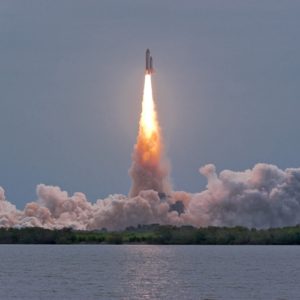 As a student of a Colorado culinary school, you probably take your greens for granted. However, astronauts at the International Space Station don’t have that luxury. For the most part, these men and women have had to live off freeze-dried dishes that hardly resemble good home planet cooking. That is, until recently. NASA has been developing an on-board produce-growing system called Veg-01, or “Veggie.” The project allowed astronauts to grow romaine lettuce while in orbit, contributing to a more exciting and decidedly fresher diet than what they’re used to.
As a student of a Colorado culinary school, you probably take your greens for granted. However, astronauts at the International Space Station don’t have that luxury. For the most part, these men and women have had to live off freeze-dried dishes that hardly resemble good home planet cooking. That is, until recently. NASA has been developing an on-board produce-growing system called Veg-01, or “Veggie.” The project allowed astronauts to grow romaine lettuce while in orbit, contributing to a more exciting and decidedly fresher diet than what they’re used to.
Intergalactic garden installment
Designed by Orbital Technologies Corp. (ORBITEC) in Madison, Wisconsin, Veggie was delivered to the space station in April. The SpaceX-3 mission from Cape Canaveral transported the food production system to the crew of Expedition 39. The crew installed the system in the space station’s Columbus module on May 7. According to NPR, the Veggie capsule is 1.5 feet long and emits a purple/magenta glow. This show of lights isn’t the result of some extraterrestrial rock – it’s produced by 132 red, 32 blue and 32 green LED lights.
The lights create an effect similar to those in greenhouses planet-side. Most plants really only need red and blue light to perform photosynthesis, but ORBITEC included the green bulbs to help the plants develop their natural coloring. Gioia Massa, the scientist in charge of the mission, notes that without the green light, the plants would grow purpleish gray, which is a far cry from the lettuce people are familiar with here on Earth.
Veggie not only requires special lights, it also needs fans to operate. Because of the space station’s lack of gravity, ORBITEC had to develop a system of heat and air exchange that help sustain the plants’ life. NASA astronauts call it the “bellows.”
Waiting for dinner
While Veggie has produced six lettuce plants, the crew can’t eat them yet. They have to freeze dry and package the plants and send them back to Earth for testing. NASA must ensure the lettuce didn’t pick up any pathogens that could be harmful to eat. Scientists hypothesize that if the lettuce is in any way contaminated, it’s because of bacteria the astronauts carry. NASA predicts the lettuce will be fine for consumption, but the out-of-atmosphere food delivery takes time and costs a lot of money. However, should the mission be successful, crews could be growing their own lettuce in the future. Longer missions that reach further into space require a ship to carry a lot of food, a cost that can be mitigated by growing it. Human mission to Mars, anyone?
The technology certainly provides an image of the future of space travel, but in the here (or, out there) and now, Veggie provides comfort to astronauts. The odd purple glow and the hum of the bellows remind astronauts that there’s something living on board the International Space Station – something other than themselves.
“The psychology of having something growing you can eat, it’s very satisfying – most of the time, when you’re not fighting off pests or something,” Massa told the source.

